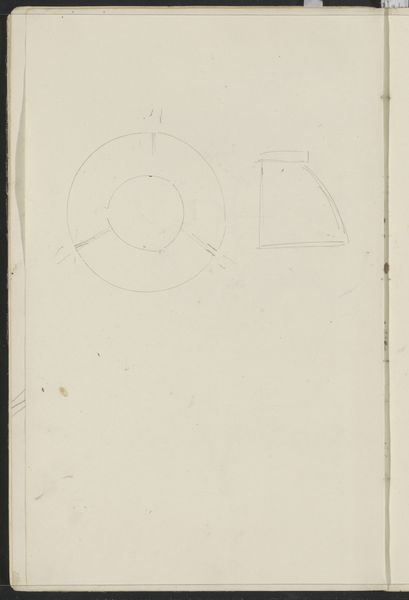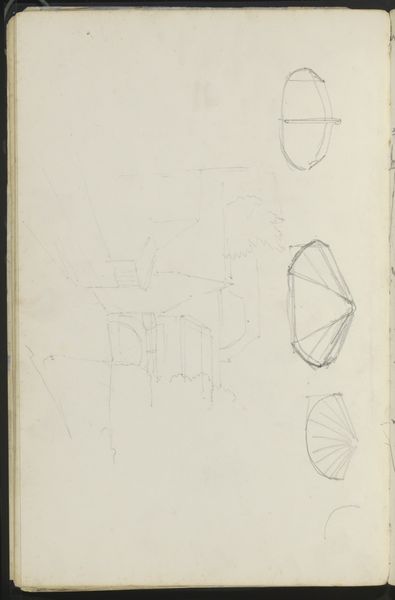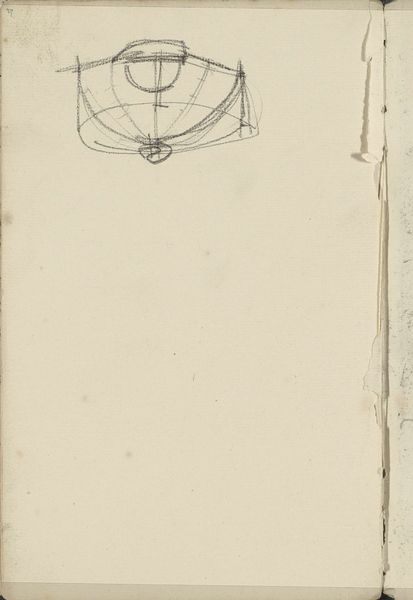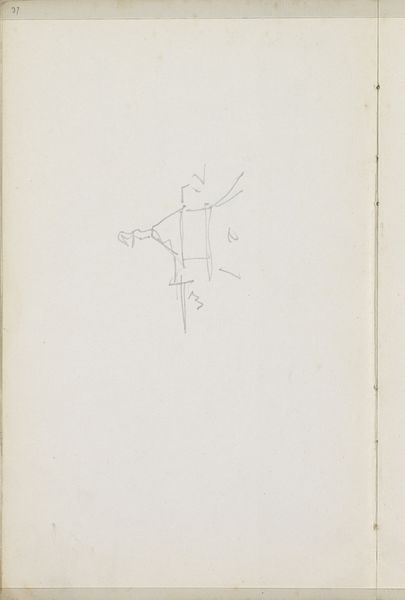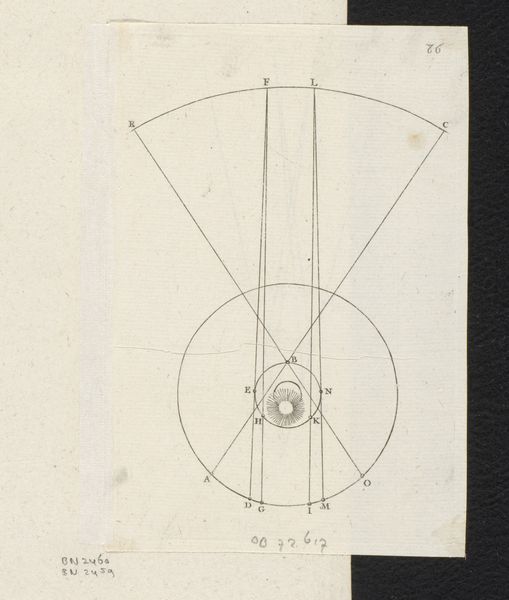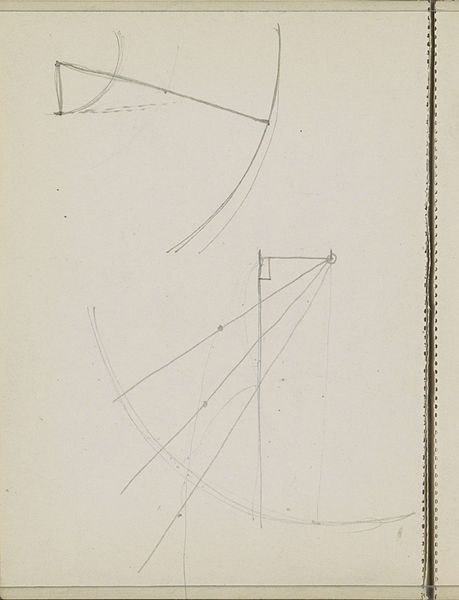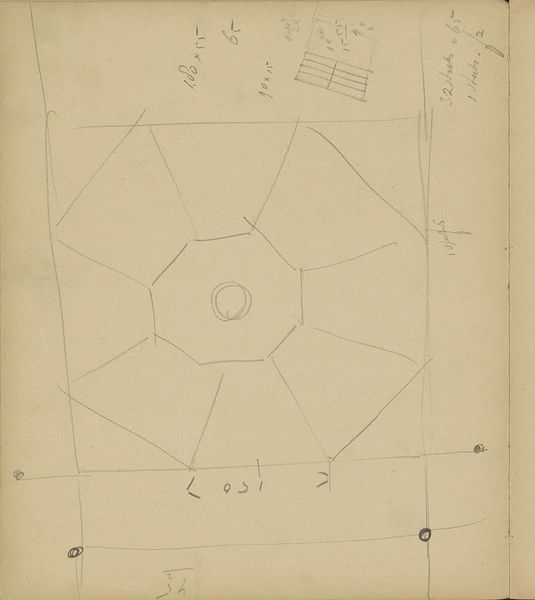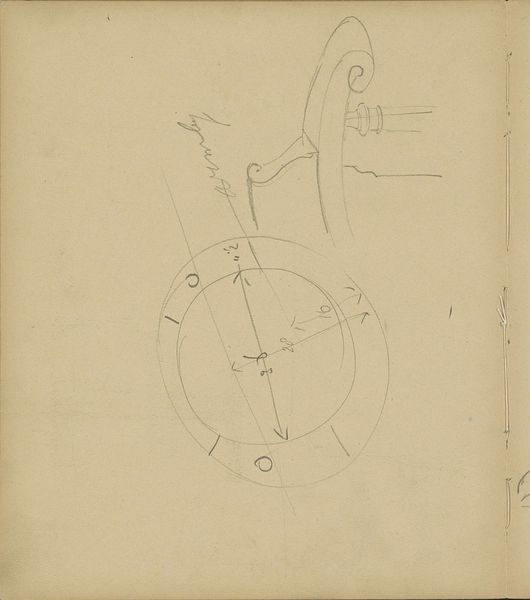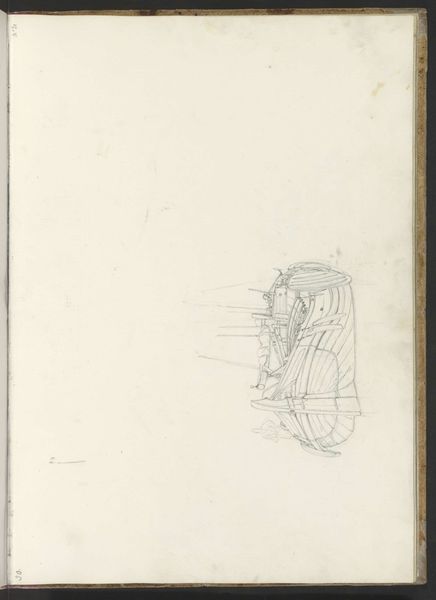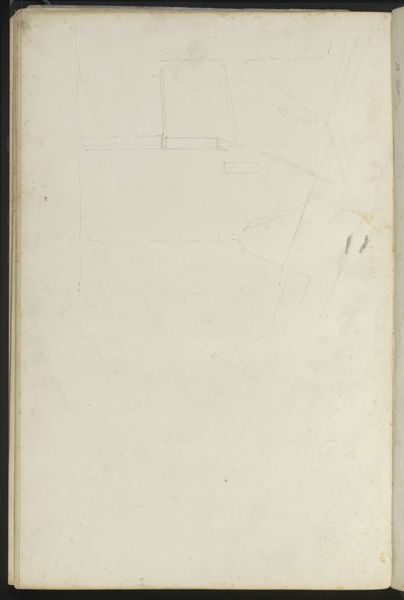
drawing, paper, pencil
#
drawing
#
landscape
#
paper
#
form
#
coloured pencil
#
pencil
#
line
Copyright: Rijks Museum: Open Domain
Editor: Here we have Willem Koekkoek’s "Voorsteven van een zeilboot," dating from sometime between 1849 and 1895. It's a pencil and colored pencil drawing on paper. The starkness of the bow against the empty page is what really grabs me. What do you see in this piece, beyond the representational subject matter? Curator: I see a document hinting at the complexities of maritime culture during a period of immense social and technological transition. Consider, who would have the leisure and means to create such a study? And what perspectives might be absent from this representation? Editor: So, it's not just a simple sketch of a boat. You're suggesting that we think about what this image tells us about the society in which it was made. How does thinking about, say, class or labor, change the way we understand the image? Curator: Exactly! While Koekkoek captures the ship's form with precision, we must acknowledge that maritime power during this time was deeply implicated in colonialism and global trade. Whose labor propelled these vessels, and at what cost? Where are the reflections of the lived experience? By asking these questions, we view the drawing as a product of its time, laden with its own biases. Editor: It makes me wonder about all the untold stories within that simple drawing. So much context can be packed into an image. Curator: Precisely. The negative space becomes charged with all that's absent and unacknowledged. Editor: That gives me a whole new perspective on seeing the social and political embedded in even a simple sketch! Thank you for pointing that out. Curator: It is crucial to question what the drawing omits as much as what it depicts, prompting broader dialogues.
Comments
No comments
Be the first to comment and join the conversation on the ultimate creative platform.
